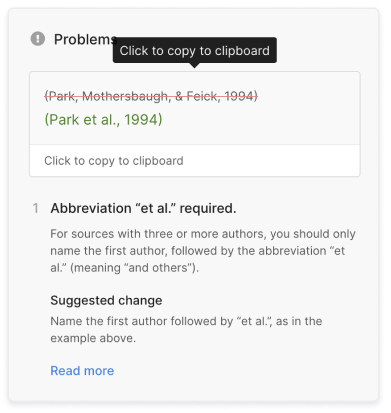Synthesizing Sources | Examples & Synthesis Matrix
Synthesizing sources involves combining the work of other scholars to provide new insights. It’s a way of integrating sources that helps situate your work in relation to existing research.
Synthesizing sources involves more than just summarizing. You must emphasize how each source contributes to current debates, highlighting points of (dis)agreement and putting the sources in conversation with each other.
You might synthesize sources in your literature review to give an overview of the field or throughout your research paper when you want to position your work in relation to existing research.
Example of synthesizing sources
Let’s take a look at an example where sources are not properly synthesized, and then see what can be done to improve it.
This paragraph provides no context for the information and does not explain the relationships between the sources described. It also doesn’t analyze the sources or consider gaps in existing research.
Research on the barriers to second language acquisition has primarily focused on age-related difficulties. Building on Lenneberg’s (1967) theory of a critical period of language acquisition, Johnson and Newport (1988) tested Lenneberg’s idea in the context of second language acquisition. Their research seemed to confirm that young learners acquire a second language more easily than older learners. Recent research has considered other potential barriers to language acquisition. Schepens, van Hout, and van der Slik (2022) have revealed that the difficulties of learning a second language at an older age are compounded by dissimilarity between a learner’s first language and the language they aim to acquire. Further research needs to be carried out to determine whether the difficulty faced by adult monoglot speakers is also faced by adults who acquired a second language during the “critical period.”
How to synthesize sources
To synthesize sources, group them around a specific theme or point of contention.
As you read sources, ask:
- What questions or ideas recur? Do the sources focus on the same points, or do they look at the issue from different angles?
- How does each source relate to others? Does it confirm or challenge the findings of past research?
- Where do the sources agree or disagree?
Once you have a clear idea of how each source positions itself, put them in conversation with each other. Analyze and interpret their points of agreement and disagreement. This displays the relationships among sources and creates a sense of coherence.
Consider both implicit and explicit (dis)agreements. Whether one source specifically refutes another or just happens to come to different conclusions without specifically engaging with it, you can mention it in your synthesis either way.
Synthesize your sources using:
- Topic sentences to introduce the relationship between the sources
- Signal phrases to attribute ideas to their authors
- Transition words and phrases to link together different ideas
Synthesis matrix
To more easily determine the similarities and dissimilarities among your sources, you can create a visual representation of their main ideas with a synthesis matrix. This is a tool that you can use when researching and writing your paper, not a part of the final text.
In a synthesis matrix, each column represents one source, and each row represents a common theme or idea among the sources. In the relevant rows, fill in a short summary of how the source treats each theme or topic.
This helps you to clearly see the commonalities or points of divergence among your sources. You can then synthesize these sources in your work by explaining their relationship.
| Lenneberg (1967) | Johnson and Newport (1988) | Schepens, van Hout, and van der Slik (2022) | |
|---|---|---|---|
| Approach | Primarily theoretical, due to the ethical implications of delaying the age at which humans are exposed to language | Testing the English grammar proficiency of 46 native Korean or Chinese speakers who moved to the US between the ages of 3 and 39 (all participants had lived in the US for at least 3 years at the time of testing) | Analyzing the results of 56,024 adult immigrants to the Netherlands from 50 different language backgrounds |
| Enabling factors in language acquisition | A critical period between early infancy and puberty after which language acquisition capabilities decline | A critical period (following Lenneberg) | General age effects (outside of a contested critical period), as well as the similarity between a learner’s first language and target language |
| Barriers to language acquisition | Aging | Aging (following Lenneberg) | Aging as well as the dissimilarity between a learner’s first language and target language |
Other interesting articles
If you want to know more about ChatGPT, AI tools, citation, and plagiarism, make sure to check out some of our other articles with explanations and examples.
ChatGPT
Frequently asked questions about synthesizing sources
- What does it mean to synthesize sources?
-
Synthesizing sources means comparing and contrasting the work of other scholars to provide new insights.
It involves analyzing and interpreting the points of agreement and disagreement among sources.
You might synthesize sources in your literature review to give an overview of the field of research or throughout your paper when you want to contribute something new to existing research.
- What is a literature review?
-
A literature review is a survey of scholarly sources (such as books, journal articles, and theses) related to a specific topic or research question.
It is often written as part of a thesis, dissertation, or research paper, in order to situate your work in relation to existing knowledge.
- Why are topic sentences important?
-
Topic sentences help keep your writing focused and guide the reader through your argument.
In an essay or paper, each paragraph should focus on a single idea. By stating the main idea in the topic sentence, you clarify what the paragraph is about for both yourself and your reader.
- When do I need to cite sources?
-
At college level, you must properly cite your sources in all essays, research papers, and other academic texts (except exams and in-class exercises).
Add a citation whenever you quote, paraphrase, or summarize information or ideas from a source. You should also give full source details in a bibliography or reference list at the end of your text.
The exact format of your citations depends on which citation style you are instructed to use. The most common styles are APA, MLA, and Chicago.
Cite this Scribbr article
If you want to cite this source, you can copy and paste the citation or click the “Cite this Scribbr article” button to automatically add the citation to our free Citation Generator.
Ryan, E. (2023, May 31). Synthesizing Sources | Examples & Synthesis Matrix. Scribbr. Retrieved November 3, 2023, from https://www.scribbr.com/working-with-sources/synthesizing-sources/

